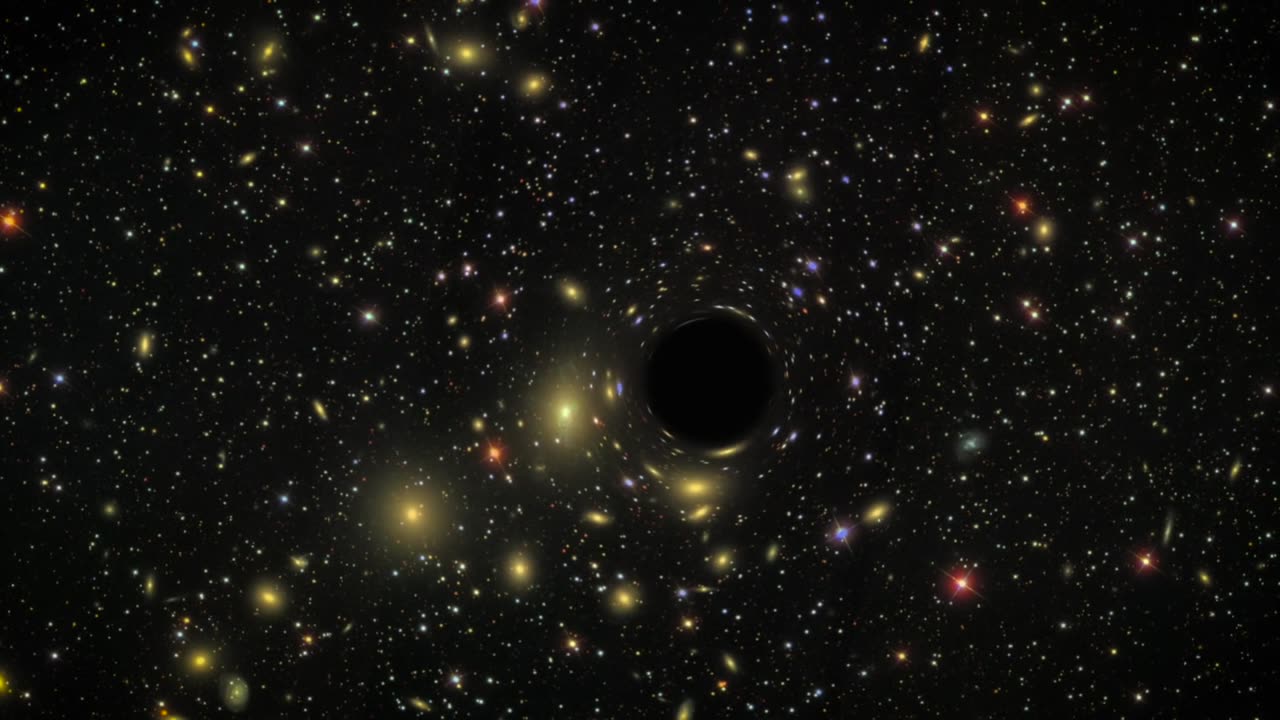Premium Only Content

X-ray Echoes Map a Black Hole’s Disk : Space Exploration
Some 3.9 billion years ago in the heart of a distant galaxy, the tidal pull of a monster black hole shredded a star that wandered too close. X-rays produced in this event first reached Earth on March 28, 2011, when they were detected by NASA's Swift satellite. Within days, scientists concluded that the outburst, now known as Swift J1644+57, represented both the tidal disruption of a star and the sudden flare-up of a previously inactive black hole.
Now astronomers using archival observations from Swift, the European Space Agency's XMM-Newton observatory and the Japan-led Suzaku satellite have identified the reflections of X-ray flares erupting during the event. Led by Erin Kara, a postdoctoral researcher at NASA's Goddard Space Flight Center in Greenbelt, Maryland, and the University of Maryland, College Park, the team has used these light echoes, or reverberations, to map the flow of gas near a newly awakened black hole for the first time.
Swift J1644+57 is one of only three tidal disruptions that have produced high-energy X-rays, and to date it remains the only event caught at the peak of this emission. While astronomers don't yet understand what causes flares near the black hole, when one occurs they can detect its echo a couple of minutes later as its light washes over structures in the developing accretion disk. The technique, called X-ray reverberation mapping, has been used before to explore stable disks around black holes, but this is time it has been applied to a newly formed disk produced by a tidal disruption.
Swift J1644+57's accretion disk was thicker, more turbulent and more chaotic than stable disks, which have had time to settle down into an orderly routine. One surprise is that high-energy X-rays arise from the innermost regions of the disk instead of a narrow jet of accelerated particles, as originally thought.
The researchers estimate the black hole has a mass about a million times that of the sun. They expect future improvements in understanding and modeling accretion flows will allow them to measure the black hole's spin using this data.
Music:" The Orion Arm" and "Particle Acceleration," both from Killer Tracks.
Credit: NASA's Goddard Space Flight Center/Scott Wiessinger
Read more: http://www.nasa.gov/feature/goddard/2...
This video is public domain and along with other supporting visualizations can be downloaded from the Scientific Visualization Studio at: http://svs.gsfc.nasa.gov/12265
Credits: NASA
-
 1:17:18
1:17:18
Glenn Greenwald
1 day agoWhat are CBS News' Billionaire Heirs Doing with Bari Weiss? With Ryan Grim on the Funding Behind It; Europe Capitulates to Trump Again | SYSTEM UPDATE #494
83.3K31 -
 LIVE
LIVE
megimu32
1 hour agoOTS: Movie Tie-In Games + Remakes: Let’s Play Memory Lane
60 watching -
 1:43:49
1:43:49
RiftTV
3 hours agoCNN Calls Black NY Shooter WHITE, Cincinnati FATIGUE | The Rift | Guest: Braeden Sorbo, 2Protects1
22.8K10 -

LumpyPotatoX2
4 hours agoKilling Floor 3: Rampage & Chaos - #RumbleGaming
2.33K -
 LIVE
LIVE
BrancoFXDC
4 hours agoPlaying Ranked Warzone - Pursuit of Diamond Rank
74 watching -
 1:11:41
1:11:41
Omar Elattar
4 hours agoThe Brain Experts: "Your Overthinking Problem Has A Physical Solution & We Can Show You!"
6.92K1 -
 LIVE
LIVE
Mattnifico
3 hours agoREPLAYING EVERY FORZA HORIZON GAME - Forza Horizon 1 (Part 2)
25 watching -
 LIVE
LIVE
DamagingDoc18
1 hour agoTime to get small! Grounded 2
13 watching -
 1:00:06
1:00:06
BonginoReport
5 hours agoCNN Speculates NYC Gunman’s Race, Gets it WRONG - Nightly Scroll w/ Hayley Caronia (Ep.100)
116K36 -
 1:45:16
1:45:16
Redacted News
5 hours agoTrump issues Ultimatum to Putin "End this war now or else," Russia not backing down | Redacted Live
196K177